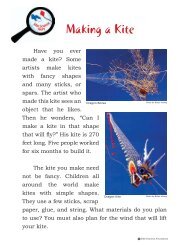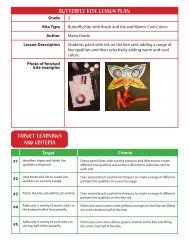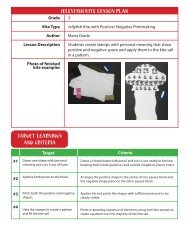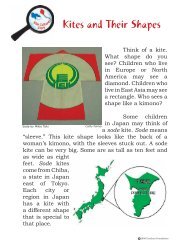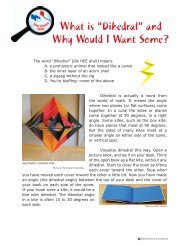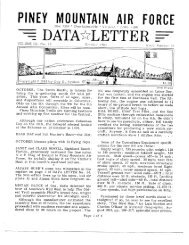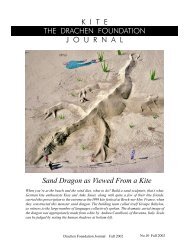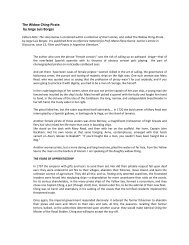Discourse Issue 9.pdf - Drachen Foundation
Discourse Issue 9.pdf - Drachen Foundation
Discourse Issue 9.pdf - Drachen Foundation
You also want an ePaper? Increase the reach of your titles
YUMPU automatically turns print PDFs into web optimized ePapers that Google loves.
was the ancient city of Dzibilchaltun<br />
(occupied from 400 BC to 1600 AD),<br />
located 7 miles north of the city of Mérida<br />
in the state of Yucatán. The second area of<br />
study was Holbox Island, located in the<br />
state of Quintana Roo on the farthest<br />
eastern side of the peninsula.<br />
MÉRIDA, YUCATÁN, MÉXICO<br />
JULY 15 - 22 ND 2010<br />
The activities undertaken during this week<br />
were focused on the stereoscopic<br />
photography applications of KAP. The<br />
activities included four surveys at the<br />
archeological site of Dzbilchaltun and the<br />
analysis of the data in the laboratory to test<br />
the possibility of achieving stereoscopic<br />
photography with KAP by using only one<br />
camera.<br />
The main goal was to use KAP to document<br />
the terrace of the Seven Dolls where the<br />
Observatory or Pyramid of the Seven Dolls<br />
was built. We would obtain pairs of images<br />
with plenty of overlap in order to appreciate<br />
the elevation or depth of the pyramids, first<br />
with the use of stereoscopic lenses and later<br />
by creating a digital, three-dimensional<br />
model of the Pyramid of the Seven Dolls,<br />
illustrated below.<br />
An illustration of the Pyramid of the Seven Dolls.<br />
METHODOLOGY<br />
Pairs of images can be obtained by shooting<br />
8 frames per second with only one camera.<br />
When using KAP, the slight movement of<br />
the kite allows the camera to take the<br />
photographs from a slightly different<br />
position, having a great overlap between<br />
images. The images with the same exposure<br />
and where the whole structure appears were<br />
the ones ultimately selected.<br />
To observe the depth or elevation on<br />
photographs using a stereoscope, we follow<br />
this methodology: First select a pair of<br />
images and place them under the lenses.<br />
View through the lenses, and with your right<br />
eye select on the image at right a landmark<br />
to use as reference. Point to it with your<br />
right fingertip. Locate the same landmark on<br />
the picture at left with your left eye, and<br />
point it with your left fingertip. Now with<br />
both eyes open, move one of the pictures to<br />
overlap the marked landmark on both<br />
images and adjust it until the depth or third<br />
dimension is appreciated. Or as described<br />
by Compton: “Select a distinctive feature<br />
lying near the center of the overlap area in a<br />
pair of photographs. Place the stereoscope<br />
over the photographs so that the two images<br />
lie under the centers of the two lenses or<br />
mirrors. By looking into the stereoscope, the<br />
viewer should be able to see a threedimensional<br />
image.”<br />
In order to create a digital, threedimensional<br />
model of the Pyramid of the<br />
Seven Dolls, we made a topographical and<br />
geographical reference survey of the<br />
pyramid. This provided the data to create a<br />
digital elevation model with ArcGis<br />
software. Later, we laid aerial photographs<br />
over the model with the TNTmips software<br />
to reproduce the pyramid in a threedimensional,<br />
digital format.<br />
The photographs needed to create this<br />
digital model must have an equidistant scale<br />
on both sides of the frame, or in other<br />
words, no deformation. To obtain these<br />
types of images, the photographs need to be<br />
taken with a 35mm lens. This specification<br />
28








